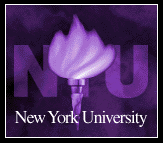Crist gives it back
It's ironic that the act of giving back a donation to avoid the appearance of impropriety can actually make a politican look more guilty. First Coast News in Florida reports the following:
TALLAHASSEE, FL (AP) -- Governor-elect Charlie Crist has returned a $25,000 donation for his inauguration that came from a Fort Lauderdale law firm with ties to the insurance industry.It seems to be getting harder for a politican to score a buck in Florida these days. Just like the recent congressional race in district 22 between the incumbent Republican Clay Shaw and state Sen. Ron Klein, the Democrat. The Sun Sentinel reported on November 6th:
Crist spokeswoman Erin Isaac says the money was returned because it was given too close to the time the Legislature will hold a special session on the state's ongoing property insurance crisis. That session begins January 16th, just two weeks after Crist takes office.
Shaw said he won't take money from tobacco or gambling interests, or the so-called "Big Sugar" companies. Klein said he refuses money from insurance companies, pharmaceutical interests and oil.Maybe Three 6 Mafia had it right when they performed live at the Oscars on March 5, 2006.
Finance, insurance and real estate committees and employees made up Shaw's largest source of contributions, by type, totaling at least $598,681, according to the Center for Responsive Politics.






 They are steaming mad. MADD published
They are steaming mad. MADD published 









